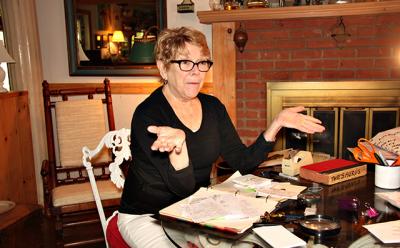E. Virgil Conway, M.T.A. Chairman, Dies
E. Virgil Conway, M.T.A. Chairman, Dies

E. Virgil Conway, a Montauk native who grew up in one of the original Carl Fisher houses in Upper Shepherd’s Neck and went on to a career of public service, including a key term as chairman of the Metropolitan Transportation Authority, died at Southampton Hospital on Oct. 21 at the age of 86.
Born at the same hospital on Aug. 2, 1929, to Edmund Virgil Conway, the chief accounting officer of Carl Fisher’s Montauk Beach Development Corporation, and the former Dorothy Brandes, he lived an outdoor Montauk life as a youth, fishing, duck-hunting, and swimming. He was one of the hamlet’s first Eagle Scouts. His father was a founding member of the Montauk Community Church, and Mr. Conway attended and donated to the church throughout his life.
A diligent and extremely bright student, he was the valedictorian of his East Hampton High School class and won a scholarship to Colgate University, where he again graduated at the top of his class. Back in Montauk for the summers, he worked as a lifeguard at the old Surf Club.
He went on to earn scholarships to Yale Law School and Pace University, and later established several of his own, including an annual four-year grant awarded to a top graduate of both the Montauk School and East Hampton High School. He was a trustee of both Colgate and Pace.
During the Korean War, after graduating from college and before entering law school, Mr. Conway enlisted in the Air Force. He rose to become a captain, a rank he continued to hold in the Air Force Reserves.
In the course of a distinguished career in both the public and private sectors, he was the chairman and chief executive officer of the Seaman’s Bank for Savings for 20 years, starting in 1968. He was a board member of a number of major corporations, among them Union Pacific, Consolidated Edison, and the Atlantic Mutual Insurance Company. A onetime chairman of the New York City Housing Partnership, he was on the board of the New York State Thruway Authority at the time of his death.
When Nelson Rockefeller became governor of New York he appointed Mr. Conway a deputy superintendent of the State Banking Department. Decades later, after serving as Westchester County’s representative on the Metropolitan Transportation Authority, he was named by Gov. George Pataki to head the agency. Under his watch, from 1995 until 2001, historic initiatives were undertaken, including the move from bus and subway tokens to MetroCards.
Sometime in the next decade, Long Island Rail Road commuters will be able to choose between trains to Penn Station or Grand Central Station, thanks to Mr. Conway’s leadership. Next year, when riders board the new Second Avenue subway line, they will have Mr. Conway to thank.
He also oversaw the end of the two-fare zone, which he believed was highly unfair to the working poor.
Although he had lived since 1969 in Bronxville, N.Y., where he was an elder of the Reformed Church of Bronxville, Mr. Conway remained committed to Montauk and spent almost all his summers in there. Montauk residents and visitors alike have benefited from his generous donations to the lighthouse, the Community Church, the Montauk Medical Center, and other local institutions and charities.
In 1952, he married the former Audrey Oehler. They lived in Brooklyn Heights with their daughters, Allison Worthington of Manhattan and Quogue, and Sarah Conway of Montauk, who lives in the same house where her father grew up.
After they were divorced, Mr. Conway married the former Elaine Wingate, on June 28, 1969. She had two sons from a former marriage who, said the family, became his sons as well. William Gay lives in Bronxville and John Gay lives in Orlando, Fla.
Mr. Conway’s daughter Sarah said her father was a great history buff and “a small-town boy who had a very successful career. He was larger than life, and was loved by so, so many.”
A funeral service was to be held today at the Reformed Church of Bronxville, with burial in the Bronxville Cemetery. The family has suggested memorial donations to the Montauk Community Church, P.O. Box 698, Montauk 11954, or Colgate University, 13 Oak Drive, Hamilton, N.Y. 13346.






